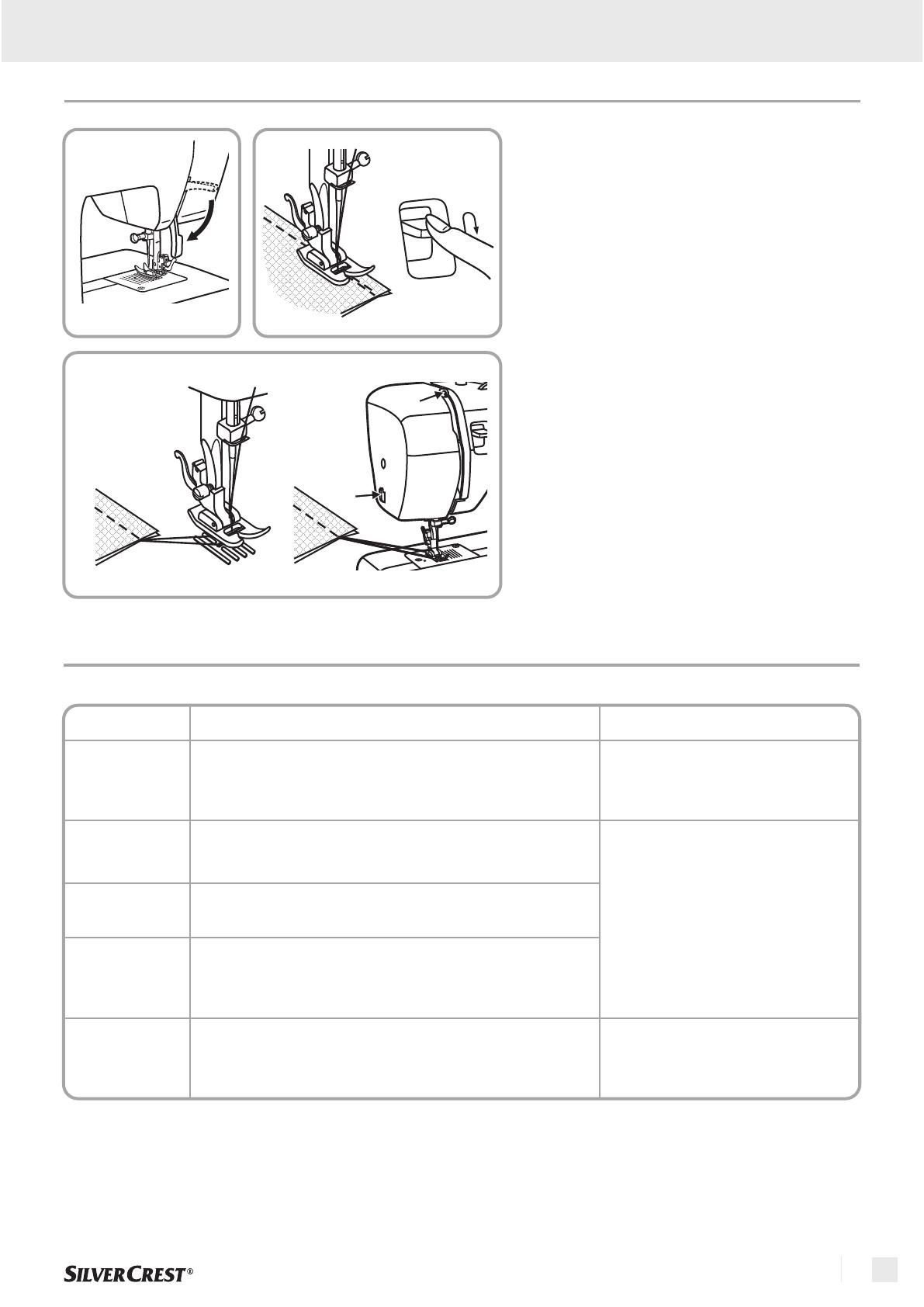
GB / IE 81
Note twin needle:
1. Twin needles are used for decorative work.
2. When sewing with twin needles, the stitch width dial (4) should be set at "2.5".
3. The European needle size is 65, 70, 80 etc. The American and Japanese needle size is 9, 11, 12 etc.
4. Replace the needle regularly and not later than the first thread breakage or skipped stitches.
NEEDLE, FABRIC, THREAD SELECTION GUIDE
IMPORTANT: Match needle size to thread size and weight of .fabric
Sewing basics
Matching the needle, fabric and thread
NEEDLE SIZE
9-11(65-75)
12(80)
14(90)
16(100)
18(110)
FABRICS THREAD
Lightweight fabrics: thin cottons, voile, serge, silk,
muslin, Qiana, interlocks, cotton knits, jerseys,
crepes, woven polyester, shirt & blouse fabrics.
Medium weight fabrics-: cotton, satin, heavy
muslin, sailcloth, double knits, light woollens.
Medium weight fabrics: cotton duck, woollens,
heavier knits, terrycloth, denims.
Heavyweight fabrics: canvas, woollens, canvas
and quilted fabrics, denims, upholstery material
(light and medium).
Heavy woollens, overcoat fabrics, upholstery
fabrics, some leathers and vinyls.
Light-duty thread in cotton,
nylon or polyester.
Most threads sold are medium
size and suitable for these
fabrics and needle sizes. Use
polyester threads on synthetic
materials and cotton on natural
woven fabrics for best results.
Always use the same thread on
top and bottom.
Heavy duty thread, carpet
thread (set the presser foot to
high pressure-high numbers.)
Sewing / Useful applications
Sewing (A)
Stitching (B)
Releasing the material (C)
Cutting the thread (C)
Once the sewing machine is correctly
threaded and adjusted, lower the presser
foot before sewing by lowering the two-step
presser foot lifter (17). Press the control
pedal (t) to start sewing.
At the end of seam, press down the reverse
sewing lever (11). Sew a few reverse
stitches. Release the lever and the machine
will begin to sew forwards again
Turn the hand wheel (20) anticlockwise to
put the thread lever (1) into its highest
position. Lift the presser foot and pull the
material back in order to release it.
Hold the threads behind the presser foot
with both hands; guide them to the thread
cutter (10) and move your hands down.
11
A
1
10
C
B

























